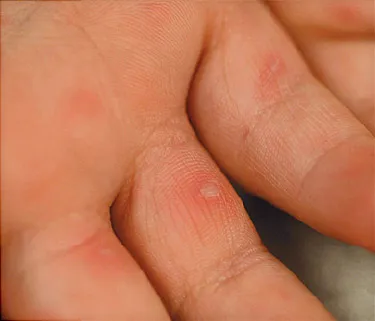Hand-foot-and-mouth disease, or HFMD, is caused by a virus. Symptoms include ulcers, or sores, inside or around the mouth, and a rash or blisters on the hands, feet, legs, or buttocks. And while it's not pleasant, it also isn't serious.
Anyone can get the disease, but children under age 10 are most likely to catch it. You can take steps to ease the symptoms while it runs its course, though.

What Causes It?
The viruses that usually cause hand-foot-and-mouth are named coxsackievirus a16 and enterovirus 71. In fact, you might hear your child’s doctor refer to it as the coxsackie virus.
CONTINUE READING BELOW
Your child can catch hand-foot-and-mouth through contact with someone who has it, or from something that's been in contact with the virus, like a toy, tabletop, or doorknob. It tends to spread easily in the summer and fall.
Symptoms
Early symptoms may include fever and a sore throat (in younger kids fever and decreased eating or drinking). Painful blisters similar to cold sores can show up on the inside of your child's mouth (usually in the back portion of the mouth) or tongue.
He might get a rash on the palms of his hands or the soles of his feet a day or two after the first symptoms appear. This rash may turn into blisters. Flat spots or sores may pop up on the knees, elbows, or buttocks. He could have all of these symptoms, or only one or two.
Mouth sores can make it hurt to swallow, so be sure your child gets enough water and calories.
How Is It Diagnosed?
Your doctor will ask about your child’s symptoms and look at any sores or rashes. This is usually enough to decide if it’s hand-foot-and-mouth disease with no extra tests. But he might take a throat swab or a stool or blood sample to be sure.
Facts About Hand-Foot-and-Mouth Disease
![Facts About Hand-Foot-and-Mouth Disease]() Reviewed by PatPew
on
tháng 12 09, 2018
Rating:
Reviewed by PatPew
on
tháng 12 09, 2018
Rating:

Không có nhận xét nào: